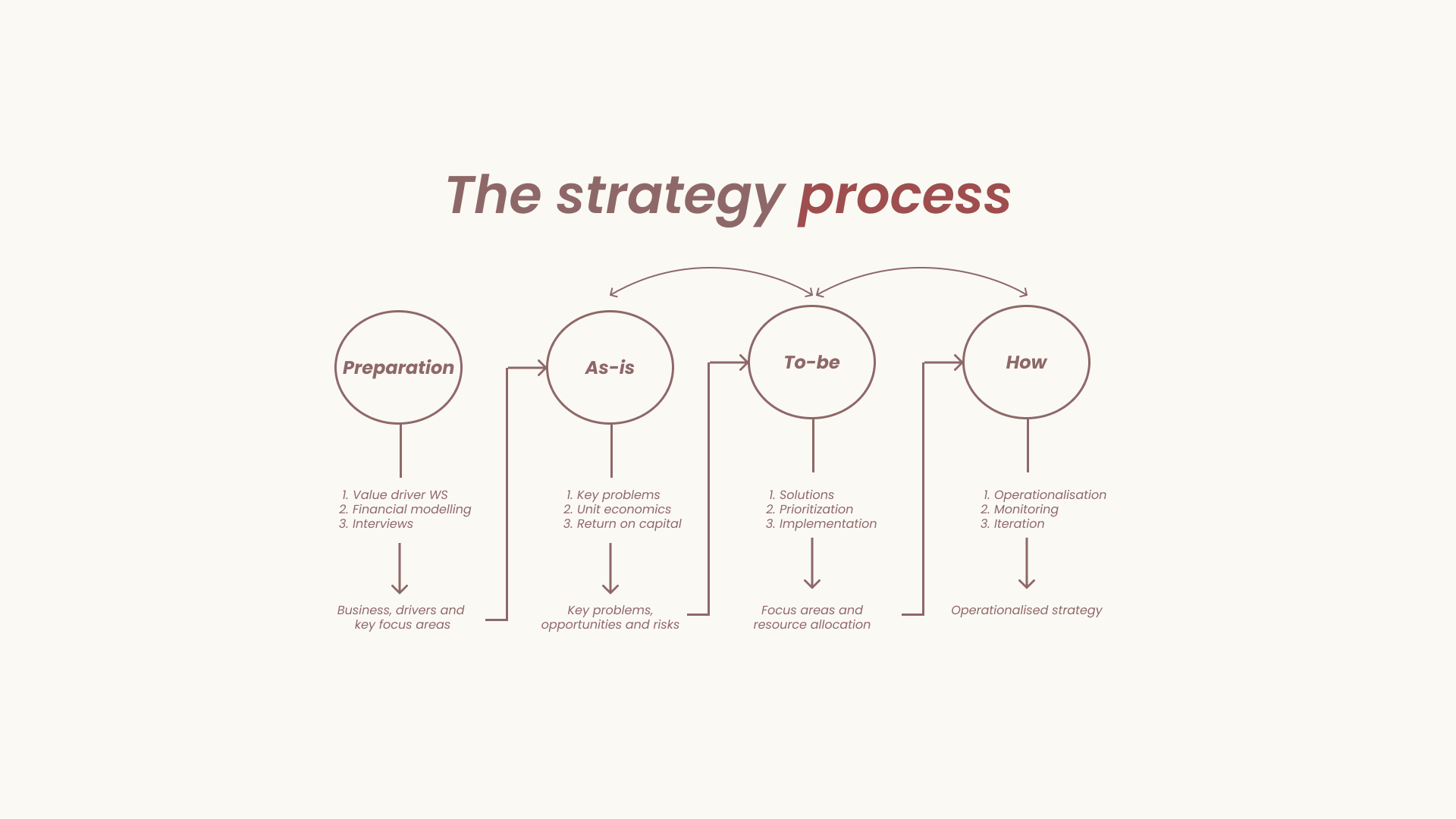Why this process

Why do we use this process?
It's best understood by working backwards from the "to-be".
Put yourself in the shoes of a CEO. He is considering how to configure the business and allocate resources for the future.
Let's use inversion and ask: "what would be some things he definitely would not want to do?
Probably:
- Piss off existing customers
- Piss off key vendors
- Give away intellectual property
- Make key employees leave.
On the less absurd side:
- Shift capital away from things that work to those that don't
- Do things that are easy to execute and obvious
- Make bets where you have no unique advantage, either on the cost or value side
- Make bets where existing assets or capabilities have zero utility
- Make bets / allocate resources to projects you cannot fund
- Make bets to projects you have no skills in
... You probably get the point.
We want to do more of what is working, and make bold bets where our skills and assets meet customer needs.
And how do we figure that out?
By figuring out what's working today.
And so we deeply analyse the current situation to answer that question.
Now, the other benefit from this sequence is the following: you will find a lot of improvements you maybe didn't think about.
And opportunities.
Here's the reason:
Most companies think they know where they stand, but in reality, very few have a deep grasp of their current situation—especially when it comes to unit economics. And here's the truth: until you truly understand where you are, you can't have a meaningful conversation about where you're headed.
The biggest issues are often buried. Pushed to the side. Unprocessed. And in my experience, few businesses take the time to think strategically, let alone have a clear picture of their own economics.
So there's so much to learn from diving into the details.
Now, why is this so critical? Because when it comes to deciding how to allocate resources—both for the short and long term—you need to know what’s already working. The worst thing you can do is throw more money into what’s bleeding you dry. If you're already losing money on something, doing more of it without understanding why is a recipe for disaster.
You shouldn't pursue things you don’t have the resources or skills to tackle. And whatever you do, avoid things that are easy for competitors to copy. If it works and someone else can replicate it, it's not going to deliver superior returns for long.
The best opportunities? They lie where your strengths meet the market’s needs in a way that's different from your competition. And the only way to identify those is by truly understanding what’s working for you today. That’s why you need a granular analysis of your unit economics, customer segments, and costs.
Think about this: one dissatisfied customer could inspire a competitor that could disrupt your entire market—just like how Richard Branson founded Virgin Airlines after a lousy experience with British Airways.
So, you need to know your customers inside and out. Every detail matters. Because buried in that granularity could be a golden nugget—a single insight that could spark your next big thing. The same goes for costs. You need to understand how much each customer transaction costs, where your margins are high, and where you’re leaking value.
When you combine these insights, you’ll have a clear picture of where your strengths lie—and more importantly, where your weaknesses are hiding. And once you understand your unit economics and growth potential, you’ll have a solid foundation for identifying new opportunities. Whether that’s entering a new market, launching a new product, or even acquiring a competitor, it all starts with knowing exactly where you stand.
Finally, connecting where you are with where you want to go doesn’t mean rigid five-year plans. It’s about being precise in direction, knowing your value, and executing on that with purpose. Flexibility is key, but it’s rooted in a clear understanding of what’s already driving your business forward. That’s why it all starts with knowing where you are.